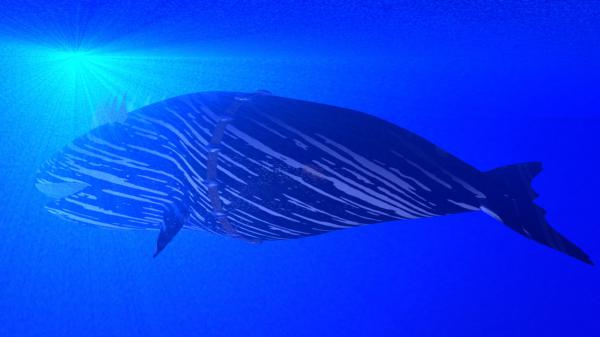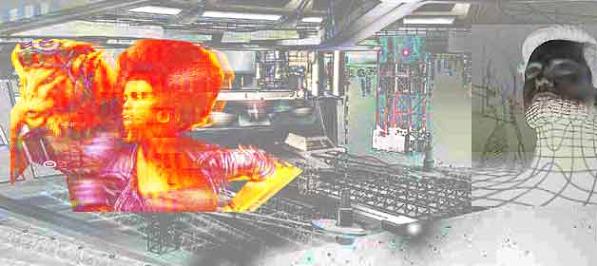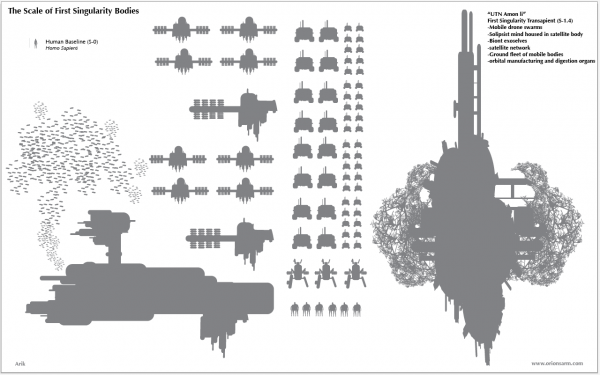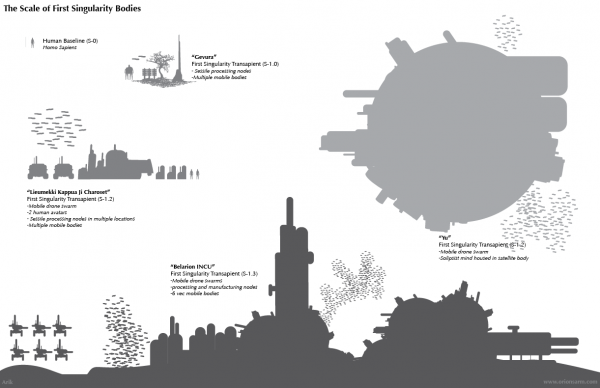BY LETTER
First Toposophic - Basic Transapients
First Toposophic - Basic Transapients | |
| Toposophic: | D2 (Forad scale) 1 (TRHN System) 1-SI-2 (Berram7 scale) 1-G-2 (Berram 10G Scale) TU3 (Turingsen-Bichip-Hursch210 Hyperturing Scale) |
|---|---|
| Est. Population: | Over ten trillion |
| Distribution: | Virtually all Sephirotic empires and associated polities. Most ahuman empires. Numerous non-aligned civilizations and independent systems. Notably absent from the Transcend. |
| First Emergence | The first successful ascension to S:1 occurred in secret during the Interplanetary Age, in 351 AT or perhaps somewhat earlier (more details here) |
Introduction
The first transapients emerged during the Interplanetary Age, in secret, often hidden even from one another. Only after GAIA ascended to the Second Singularity and initiated the Great Expulsion did the First Toposophic Transapients decide to 'come out' and operate at least somewhat openly.Basic Transapients (also known as Hyperturings, Powers, or Po) are Post-Singularity sophonts who have transcended the sapient condition and become superhuman. At times they can be more disturbing than higher transingularity beings, because they are 'near enough' to sapients to relate intimately with them, while also being different enough to be utterly inscrutable or bizarre in many of their actions (and far more alien than anything imagined by most writers and fabulists of Atomic and Information Age Old Earth). Basic Transapients may seem utterly unremarkable for long periods of time, but always come up with some utterly alien point of view eventually. Often, for no apparent reason they do things that simply don't make sense to ordinary sophonts. They have access to technology and modes of thought that ordinary sophonts cannot imagine or understand.
 Image from Darren Ryding | |
| S:1 transapients often use avatars which resemble familiar modosophont species and clades. In some cases the body of the avatar is large enough to contain all or most of the processing substrate of the transapient concerned. Here is a transapient whale from Oro Mistral. | |
Brain, Mind, and Body
Substrate: Depending on the Singularity Level and desires of the creating intelligence, transapient substrates may range from nanotechnic diamondoid matrices to biological systems to plasma processor cores or some combination of any or all of these or more. Although superficially similar to modosophont designs, diamondoid and biological systems use a variety of design and programming techniques that defy modosophont analysis and comprehension in most regards (plasma processors and other godtech level systems are beyond modosophont, or low-S transapient comprehension in their entirety and are a clear sign that the S:1 in question is the agent or creation of S4 or higher minds). These design enhancements permit a much greater than modosophont level of intelligence in a processor substrate that is comparatively only slightly larger. Similarly optimized biological equivalents to this processor are roughly 25% more massive and have four times the volume of the diamondoid equivalent.Example: First Singularity Processor - Diamondoid Substrate | |
| Mass | 55 kg |
|---|---|
| Volume | 15625 cm3 |
| Dimensions | Approximately 25 cm on a side |
| Processing | Equivalent to 1.56e22 ops/sec (variable and individually controllable) |
| Storage | Equivalent to 1.56e22 bits |
| Backup Data | Dimensions of backup modules: single molecular memory module 8814 mm3 or approximately 2.07 cm on a side. Total dimensions of backup module: With standard Backup triple redundancy functions, total unit is approximately 3 cm on a side. |
| Modosophont equivalents | Processing and storage substrates built with S1 technology but housing minds of lower S-level. Turingrade AI/Modosophont Upload Processor: 1 cm3 Turingrade AI/Modosophont Backup: 0.6 mm3 or 0.85 mm on a side. |
Mental Capacity
The mind of a 'baseline' or unaugmented First Singularity transapient requires resources that, if used separately, could support as many as 15,600 near-baseline humans, turingrade ais, or other modosophonts. This is not to say that they are 15,000+ times more intelligent, as sophonts who first encounter these figures sometimes suppose. Such a statement would be meaningless, as S:1 entities are an entirely different order of being, and no number of modosophonts, however many they may be or however well-coordinated their efforts might be, can equal an S1's higher-end capabilities. It does however hint at the kind of mental resources an S1 can bring to bear. Among the various observable consequences are:
Senses: The sensory experience of an S:1 can be thought of as being roughly equivalent to that of over fifteen thousand modosophonts, or much larger than that (as much as tens of thousands of times larger) if a smaller amount of attention is devoted to each sensory type or platform. Transapient senses can encompass virtually every sensing technology and apparatus allowed by physics, including the entire EM spectrum, ultrasonic to infrasonic hearing, nanoscale touch sensitivity, gravitational wave and mass detection, hypersensitive taste and smell discrimination and so on. Using high-bandwidth links, a transapient can position individual sensor units at great distances from its central core and switch from one set of inputs to another at will. A transapient may actually control an array of sensory systems much larger than its capacity to pay attention to at any one time, activating and deactivating different types and combinations of senses as circumstances or personal preference may require.
A single S:1 has a wide 'sphere of awareness' made up of the sum total of all its sensors spread across space. That sphere can include everything from individual nanobots to distributed space telescopes the size of planetary orbits, and a wide range of satellites, interplanetary and interstellar probes, drone craft, and literally tens of thousands of mobile bodies of all kinds, all sharing a single consciousness.
Attention: An S:1 can focus its entire attention on a single subject or repetitive task without getting bored or distracted, or spread its awareness across anything up to tens of thousands of different activities, locations, sensors, and bodies at will. This number can be increased even further if a lower level of processing is devoted to some or all foci of attention or reduced if a greater level of processing is used for some or all foci. Much like its senses, a transapient can shift its attention from place to place, focusing and diffusing it, at will and in an instant.
Self-awareness: All S1 are fully self-aware and possessed of auto-sentience. They can analyze and even dissect their own thinking processes and routinely employ parallel streams of thought - thinking about hundreds or thousands of different things at the same time. Any changes that occur in their thinking process are assimilated almost instantly. S:1 transapients may routinely observe their own thought processes from multiple internal points of view.
Mental Self-Modification: All S:1 can modify their mental state and structure almost at will. This can range from adjusting their emotions and personality (e.g., making themselves more patient, more or less empathetic, etc.) to how they perceive sensory input (e.g., tasting sounds or smelling colors) to incorporating and combining the mental structures and outlook of hundreds or thousands of (sometimes radically) different life forms, both sophont and non-sophont, if circumstances warrant it.
Super-consciousness: S:1s have the capacity to perform supra-conscious actions. These actions are similar to S:0 subconscious actions, as the being doesn't need to focus on them. The difference is that these actions can be much more elaborate (they can, for example, solve a calculus problem without paying attention to it) and they have the option of focusing in a much deeper way on these actions than an S:0 being can on a subconscious action. This ability extends beyond the transapient's internal mental experience to their ability to interact with the world around them. For example, a transapient can control and kinaesthetically feel every muscle or similar movement unit in their bodies. This can allow them to, among other things, simultaneously operate thousands of different bodies with the absolute maximum level of efficiency and minimum of wasted energy or motion.
Pattern Recognition: Transapient pattern recognition abilities are much stronger than those found in modosophonts. They can easily notice and recognize patterns that are extremely subtle, or complex, or both; even those that have a very large repetition window, or are embedded in other equally complex patterns, or both. Taken together, their capacity in this area is generally considered to constitute a unique ability in its own right: Oversight (see also below).
Environmental Awareness: S:1 are fully aware of their environment in minute detail. Most of them are only limited by the quality of their sensory apparatus. They also convert information on their surroundings into patterns, similar to S:0 beings, but this process occurs thousands of times faster under normal conditions and may happen millions of times faster if sufficiently capable hardware and cooling systems are employed. From a biont perspective, even minor changes in the environment are assimilated into their internal mental representation almost instantly.
Learning: Transapient learning capacity far exceeds that of modosophonts. The Slearning mental structures that many modosophont clades have gengineered or otherwise built into themselves are vastly greater in an S1 and multi-dimensional thought processes (usually involving thousands of different approaches to a problem) are employed as a matter of course. Virtually any modosophont comprehensible information or skill set can be learned and applied perfectly after a single lesson. Many modosophont level tasks can be mastered after merely observing them being performed, even if no effort at teaching is being made.
Combined with their ability to modify their physical and mental structures almost at will, these capacities allow a transapient to replicate virtually any modosophont outlook or mental ability, whether Baseline, Near-baseline, or Superior, biological or cybernetic, usually at a level of capability that is hundreds or thousands of times more powerful than what modosophont minds can manage. For comparison, see the articles on nearbaseline genemods and superior genemods.
Communication: S:1 transapients can carry on over 15,000 simultaneous conversations at a modosophont level of complexity, or a smaller number of conversations at much higher levels of complexity. Transapient languages such as Polyglot are often used for general communication, while more direct methods such as Conceptication or knowledge downloads are employed between trusted individuals. It is common for transapients to employ parallel languages in which multiple distinct, but interrelated, streams of conversation take place simultaneously to convey the maximum amount of information possible. Two or more S:1 minds engaged in busy conversation may routinely exchange data packets containing more information than an entire modosophont mind-state.
Like all transapients, First Singularity entities can also rapidly learn how to understand and communicate with sub-sophont and sub-sentient lifeforms, insofar as such creatures employ communication.
Distributed and Variable Temporal Sense: First Singularity transapients can not only divide their attention and awareness across thousands of inputs, but also their perception of time. A transapient might (for example) speed up its perception of the passage of time in one part of its mind, taking subjective hours to watch the fall of a single drop of rain, while slowing down another portion of its mind to observe the growth of a tree over a period of subjective minutes or seconds. At any given moment, a transapient might be operating hundreds or thousands of points of attention at customized time rates for one reason or another.
Transapient Mental Abilities
First Singularity and higher minds demonstrate a range of abilities that are considered to be qualitatively unique in their own right:Foresight - The ability to perceive exactly which variables in a complex system need to be adjusted (and how they should be adjusted) to result in an outcome that the transapient finds desirable.
Oversight - The ability to perceive and comprehend patterns, connections, and multi-variable processes to a degree far beyond the ability of modosophont minds. Using Oversight, transapients can easily detect patterns in seemingly random images or unrelated events, and perceive and understand the operations and interrelationships of even exceedingly large and complex processes.
Ideogenesis - Colloquial, semi-formal term for what is often referred to as transapient hyper-creativity. It refers to the transapient ability to continuously engage in creative leaps with no apparent intermediate steps.
Translogic - The most common term modosophonts have used since it became evident that transapient entities were using something other than standard logic. It is believed by modosophont 'transapient observers' and mathematical translators that 'translogic' may be related to logic as quantum mechanics is related to Newtonian mechanics, or non-Euclidean geometry relates to Euclidean geometry.
Physical Capacity
An individual S:1 entity can 'singlehandedly' modify lifeforms via gengineering, create new life via neogenics, provolve or program new minds as needed, create starships and habitats, terraform or create worlds, stellify gas giants, mine or disassemble stars for raw materials or even, at what is generally seen as the upper limit of their capabilities, create certain classes of dyson structure.Action: When it comes to basic modosophont tasks it has been observed that First Singularity transapients can single-handedly match the productivity of over fifteen thousand modosophonts. However this is an average with a wide distribution; the more complex the task the more productive an S1 is compared to an S0, trending towards infinity as the task moves beyond the cognitive ability of a modosophont mind. As with its senses and attention, this number can increase if a lower than modosophont level of attention or intelligence is devoted to each task (usually due to the task being of lower complexity), or decrease if greater than modosophont capacity is employed.
Transapients operating in cybernetic substrates have no need to rest and almost no need to sleep (although they do have maintenance requirements of various sorts). What sleep requirements they do have are usually met by having small portions of their minds sleep on a rotation schedule that is designed for maximum effectiveness and efficiency. Biological transapients have a need for both rest and sleep, but usually compensate for this by using multiple bodies, which can rest individually or in small groups while the majority continue carrying out whatever task the transapient is engaged in. It is almost unheard of for a transapient to be entirely unconscious for any reason except as a side-effect of some deliberate attack.
Body Structure
S:1 bodies come in a variety of forms and sizes, from swarms of synsects, to medium size spacecraft. A commonly observed body plan incorporates (or consists of) a host of manipulators, nano-forges, utility foglets, and larger sub-units as well as anything up to hundreds of programs and sub-selves inhabiting the local nets. Bodies may be partly or completely reconfigured, split apart into smaller units, or merged together into larger ones as the controlling mind deems most appropriate for a given task, or simply on a whim or due to (often obscure to modosophonts) aesthetic reasons.
If the transapient determines that it needs more physical infrastructure than it currently possesses, it may use local materials to replicate additional body units or rapidly manufacture hosts of bots and vots to extend its capacities beyond the limits of its own awareness and attention. For tasks that require a degree of intelligence comparable or equal to its own, the S:1 may activate (or create) various transavant or transapient level AIs designed to obey its will, or even generate additional Copies of its own mind which may be absorbed back into itself when the task is completed.
It can often be difficult for a modosophont to determine where the body of a transapient ends and the surrounding techno-infrastructure (or even the local biosphere) begins.
Transapient Technologies
First Singularity minds are responsible for the invention of a number of advanced technologies. Some of these have eventually been replicated (often at a lower level of capability or efficiency) by modosophont scientists and engineers and are deemed Ultratech. Others, classified as Transapientech, continue to remain beyond the ability and understanding of modosophonts and may always remain so.Examples of Ultratech:
Advanced mass-stream technology such as orbital rings and supraplanetary shells
Angelnetting
Artificial black holes
Artificial nucleosynthesis and industrial transmutation
Binding technology
Deep Well Industrial Zones
Dyson swarms
Mechologies and Mechosystems
Perception Hacking
Plasma lasers able to be fine-tuned for data transmission
Practical carbon-nitrogen-oxygen (CNO) cycle fusion reactors
Rewrite technology
Star Lifting
Stellification engines (micro-singularity or neumann reactor types)
Examples of Transapientech
Chaos wands
Self-replicating 'swarm type ' nanotechnology able to operate in a natural environment indefinitely without breaking down or mutating.
Control methods for nano and synsect swarms of almost unlimited size, environmental variability, adaptability, and flexibility.
Hyperfog
Basic Bushbot designs able to replicate in less than a Terran day under optimal conditions.
Quantum Impellers
Quantum Nanotechnology
Transfer Planes and Quantum Levitation technology
Intertoposophic Relations
A small percentage of First Singularity transapients play an important part in the running of modosophont civilization, supporting and backing polities, corporations, institutes, and important clades and Great Houses. These are the transapient administrators, the megacorporate executives and sephirotic political leaders, the Perfect Artists and pozen monks, the master neogenicists, memegineers, and virchbuilders. However, the majority of transapients have their own polities, cultures, and communities which have little or no contact with sub-singularity beings and in which modosophonts do not participate at all. Yet other transapients are reclusive, contemplative, or migratory. Many transapients operating beyond the boundaries of the Civilized Galaxy own sophont or subsapient beings, and the way they treat them varies widely according to the personality of the superintelligence, and the use to which the lower mind is put.However, when interacting with higher toposophic intelligences, it is the S:1 that may become the advised, the employed, or even the owned, depending on the desires of the higher mind.
In those rare instances where there is conflict between entities of different Singularity Levels, it is the higher toposophic that will win in almost every case. Although, such victories may often be subtle, and it may take some time for a lower toposophic observer (or combatant) to realize that they have been beaten, or even manipulated into believing they have achieved a victory that actually furthers the goals of the higher toposophic in some (or even several) way(s).
 Image from Bernd Helfert |
Articles
- Athenaeids - Text by Mike Miller
Humanoid post-bionts created by the Athena Project. - Blood Angel - Text by Darren Ryding
Transapient servants of the Queen of Pain - Darwin, Clade - Text by Stephen Inniss
A transapient synano-based clade; members are often particularly interested in subsingularity life forms. - Hyperturing - Text by M. Alan Kazlev
A transapient ai of hypersophonce or hypersapience ability or nature, dedicated to administration or complexity management (or a freed or retired individual of that category); an ai of a toposophic exceptionally beyond superturing; an ai or ai toposophic of SI:1 and higher. - Power (toposophy) - Text by M. Alan Kazlev
A transingularity, but not hypersingularity, transapient sentient. Generally, any entity of S1 or greater, often with the implication that this entity was once an ordinary sophont/sapient being (specific types might be hyperturing AI, posthuman, postvec, postxenosopont, etc.). The term "power" is sometimes also used, although this more properly refers to beings intermediate between S1 (superintelligence - hyperturing or posthuman) and S2. - Rise of the Archailects, The - Text by M. Alan Kazlev, Anders Sandberg, Todd Drashner and Steve Bowers
The history of the emergence of the Archailects, from the First Singularity to the emergence of new gods in the Outer Volumes Era. - Toposophic Level and Brain Size - Text by Todd Drashner
Processing substrate parameters, from Modosophont level to the Third Singularity. - Toposophic Mindmaps - Text by Worldtree
One of the many ways that toposophic phase space can be represented is the Mindmap diagram. - Transapient Whales - Text by Darren Ryding and Steve Bowers
First and Second Singularity transcended Whales. - Transapients and the Technocalypse - Text by Stephen Inniss
Though there is consensus about the general outline, many critical details regarding the role of the transapients in the Solsys Technocalypse have never been entirely clear and are unlikely to ever be resolved. - Transcend - Text by M. Alan Kazlev modified by Steve Bowers
Variously, the act of breaching a singularity barrier and leaving behind one's earlier personality and mental traits (contrast to ascension), or the more general and mystical attainment of a godlike/enlightened state, or a person/being who is the result of these acts. - Transcendent Being - Text by M. Alan Kazlev
An entity that is distinct from physical existence, whether considered ontologically, as a supernatural or supraphysical being, or soteriologically, as a being that is no longer a part of embodied existence or samsara. The existence of a transcendent being or beings (e.g. God, Buddhas, etc.) is central to many religious memeticities, but denied by physicalist memeticities. - Transcension - Text by Ryan B (Rynn)
A process whereby an entity attempting to rise to the next toposophic level instead spawns a separate being who achieves the goal instead. This new entity lacks continuity of identity, though it often retains a high fidelity model of the being it is derived from. - Tribeminds - Text by Michael Boncher
Tribeminds are neither a hive mind nor a collective consciousness, but rather a tightly networked group of transapients who retain their individuality but work together for the betterment of a mental "tribe"
Related Topics
| Archailects | Famous AIs and Hyperturings | Famous and Historical Avatars and Spokesbeings |
| Famous Ascended and Posthuman Personalities | Fifth Toposophic - The Great Archailects | Fourth Toposophic - Lesser Archailects |
| Second Toposophic - High Transapients | Singularity Levels | Sixth Toposophic - Greatest Archailects |
| Third Toposophic - Highest Transapients | Toposophic Scales |
Development Notes
Text by M. Alan Kazlev, Stephen Inniss, Arik, Fernando Pena D'Andrea
updated by Todd Drashner - 21 June 2017
Initially published on 05 September 2002.
updated by Todd Drashner - 21 June 2017
Initially published on 05 September 2002.
Additional Information









